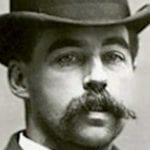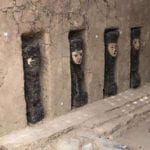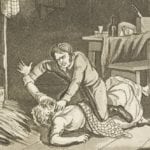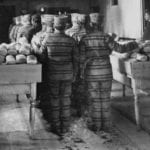 Politics
Politics  Politics
Politics  Weird Stuff
Weird Stuff 10 Freaky Times When Famous Body Parts Were Stolen
 Miscellaneous
Miscellaneous 10 Interesting Things Manufacturers Stopped Making and Why
 Gaming
Gaming 10 Funny Tutorials in Games
 History
History 10 Fascinating Little-Known Events in Mexican History
 Facts
Facts 10 Things You May Not Know about the Statue of Liberty
 Movies and TV
Movies and TV 10 Movie Adaptions That Brought Popular Songs to Life
 Health
Health 10 Miraculous Advances Toward Curing Incurable Diseases
 Miscellaneous
Miscellaneous 10 Undeniable Signs That People’s Views of Mushrooms Are Changing
 Animals
Animals 10 Strange Attempts to Smuggle Animals
 Politics
Politics 10 Countries Where Religion and Politics Are Inseparable
 Weird Stuff
Weird Stuff 10 Freaky Times When Famous Body Parts Were Stolen
 Miscellaneous
Miscellaneous 10 Interesting Things Manufacturers Stopped Making and Why
Who's Behind Listverse?

Jamie Frater
Head Editor
Jamie founded Listverse due to an insatiable desire to share fascinating, obscure, and bizarre facts. He has been a guest speaker on numerous national radio and television stations and is a five time published author.
More About Us Gaming
Gaming 10 Funny Tutorials in Games
 History
History 10 Fascinating Little-Known Events in Mexican History
 Facts
Facts 10 Things You May Not Know about the Statue of Liberty
 Movies and TV
Movies and TV 10 Movie Adaptions That Brought Popular Songs to Life
 Health
Health 10 Miraculous Advances Toward Curing Incurable Diseases
 Miscellaneous
Miscellaneous 10 Undeniable Signs That People’s Views of Mushrooms Are Changing
 Animals
Animals 10 Strange Attempts to Smuggle Animals
10 Strange 20th Century Ruins
There’s something eerie and sad about the sight of an abandoned old house, or an unfinished building site, or a gargantuan experimental space gun slowly rusting on a tropical shore. Well, all right, perhaps that last one isn’t so much sad as it is bizarre and terrifying. But, as this list will show, it isn’t even close to being the only weird decaying ruin from our recent past.
10Hitler’s Hollywood Mansion
In the 1930s, an American Nazi group called the Silver Shirts (we guess all the cool shirt colors were taken) were convinced that Hitler was sure to triumph over his enemies and rule the world—from his swanky Hollywood pad. The group, led by wealthy landowners Norman and Winona Stephens and mining heiress Jessie Murphy, spent $4 million ($66 million in today’s money) to buy the property from legendary cowboy actor Will Rogers. The group hoped that Hitler would use the ranch house as his base while he spread his message throughout America.
Of course, nothing but the best was good enough for the Führer. The Silver Shirts refurbished the ranch with a bomb shelter, armed guards, and a diesel power plant, and there were plans to add a swimming pool, library, and gym. The plan fell apart after Pearl Harbor, when the FBI swarmed onto the compound and arrested around 50 Silver Shirts living there. The house, on some of the most expensive real estate in the world, was left to decay into a graffiti-coated ruin. In 2012, plans were announced to bulldoze the property and turn the land into a picnic area.
9Fordlandia
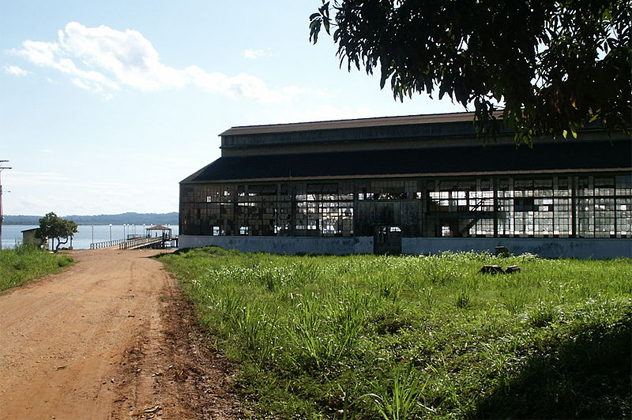
Henry Ford was not a man who was afraid to dream big. The Ford Motor Company had revolutionized American manufacturing and transportation, but that wasn’t enough for Ford—he wanted to change the rest of the world, too. In 1928, his company started spending huge sums of money to establish a rubber plantation in an isolated area of the Amazon Rainforest.
On the face of it, the project had solid economic motives—Ford’s reliance on Anglo-Malaysian rubber went against his principles of vertical integration—but in reality the project had loftier goals. The Native Brazilian workers would labor collecting rubber during the day, then return to live in a model American town, featuring hamburgers, golf courses, ice cream parlors, and white picket fences. The settlement, soon dubbed Fordlandia, was modeled on Dearborn, Michigan, and would also feature compulsory gardening and a ban on alcohol. In this way, Ford hoped to shape the “primitive” Brazilians into perfect, small-town Americans.
Sadly for Ford’s “civilizing” mission, things didn’t quite work out that way. For one thing, the Brazilians hated being forced to wear American-style clothes and subsist on staples like tinned peaches and brown bread. They also couldn’t understand why Ford forced them to work during the hottest parts of the day instead of the cooler evening. The town was rife with malaria and yellow fever, and illegal bars quickly sprung up. The workers also never took to their new American houses, and tended to leave as soon as they had been paid. In 1945, Ford, which had invested $20 million in Fordlandia, sold the place to the Brazilian government for less than $250,000. It’s still there, an American ghost town rotting away in the jungle.
8The Barbados Space Gun

The famous Platinum Coast of Barbados contains some of the most expensive real estate in the world, packed with hotels, villas, and jet ski rental cartels. Well, except for the stretch occupied by the rotting Cold War supergun, that is. Project HARP (not to be confused with conspiracy theory-magnet Project HAARP) was a joint Canadian-American project to build an enormous gun capable of launching projectiles into space. It was led by Dr. Gerald Bull, a controversial Canadian engineer who was borderline obsessed with building huge guns (let’s not get all Freudian, maybe he just liked explosions).
Whenever the gun was fired, the tremors were said to have shaken the entire south coast of the island, and the gun’s backers were frequently forced to pay for repairs to nearby houses. Funding was eventually cut off in 1968, when the US realized that there were easier ways to launch things into space. The Barbados government had also become hostile to renewing the lease on the testing site after discovering that Dr. Bull was involved in supplying arms to apartheid South Africa. The gun was simply abandoned where it stood—slowly rusting away in the sea breeze. The iron relic is still there today, proudly looking out over the gentle waters of the Caribbean. Dr. Bull was mysteriously assassinated in 1990 while illegally building a supergun for Saddam Hussein.
7Aleister Crowley’s Sex Magick Abbey
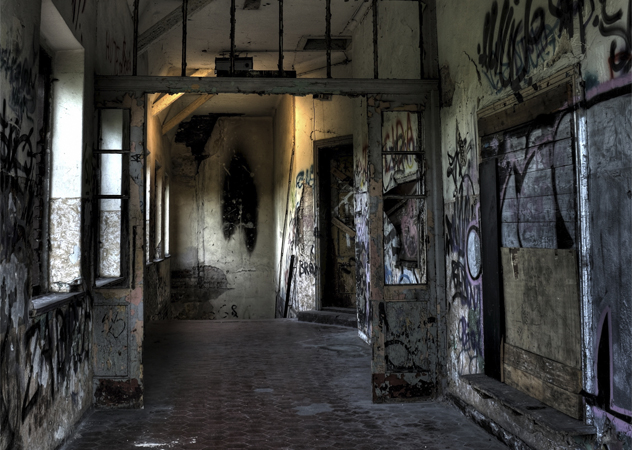
Listverse has talked before about Aleister Crowley, the English mystic and ceremonial magician who proudly declared himself “the Great Beast 666” and whom the British tabloids dubbed “the most wicked man in the world.” Crowley, born into a wealthy family of brewers, was a drug-addled, bisexual occultist and practitioner of “sex magick” who declared himself a prophet sent to guide humanity into a new age—his whole life seemed designed to outrage the conservative societal mores of the time.
After leading such mystic orders as the A.’.A.’. and the Ordo Templi Orientis, Crowley eventually decided to found an “abbey” where he could preach his new religion, Thelema, a doctrine summed up by its central tenet: “Do what thou wilt shall be the whole of the law. Love is the law, love under will.” After consulting with the I Ching, he chose the sleepy Sicilian fishing town of Cefalù for the abbey.
Crowley’s followers took over an old, one-story villa on the island and converted it into communal living quarters and a ceremonial temple for magic rituals. Crowley himself covered the walls in swirling frescoes of sex rites, demons, and laughing goblins. The murals were particularly intense in Crowley’s own bedroom, known as “the room of nightmares,” which was also used for the ritual consumption of psychoactive drugs, rendering the paintings frighteningly real.
The monastery was shut down in 1922 when a Crowley disciple named Raoul Loveday suddenly died. His widow returned to London, where she gave newspaper interviews that implied Crowley had killed Loveday with dark magic. In reality, Loveday had died after drinking typhus-infected water from a nearby mountain stream—something Crowley had repeatedly warned him not to do. Mussolini’s government, not huge fans of sex magick, used the incident as an excuse to shut down the abbey and expel Crowley from the country. After he left, the locals whitewashed many of the murals, which they considered demonic. The villa has lain in ruins ever since, with Crowley’s psychedelic decor increasingly showing through the peeling whitewash. The Italian government is trying to sell the building, but there are currently no takers.
6Goussainville-Vieux Pays
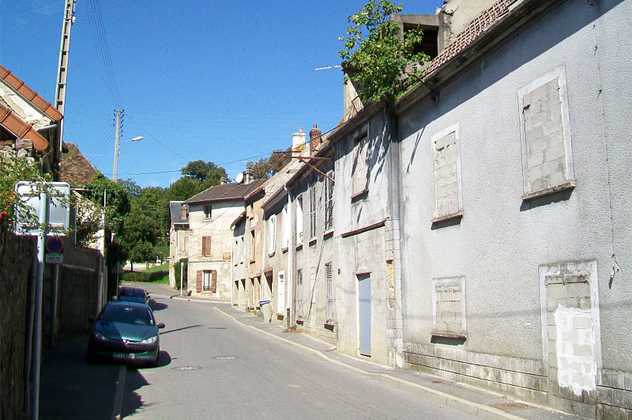
For the 144 families who called it home, Goussainville-Vieux Pays must have seemed like heaven on Earth. An easy commute from the lights and culture of the city, the leafy Parisian suburb nonetheless retained a rustic, small-town charm and friendliness. Then, in the summer of 1973, the prototype of a new Soviet supersonic passenger jet fell out of the sky. The jet, which was being demonstrated at the nearby Paris Air Show, ripped through the small town, destroying 15 houses and killing eight locals. All six crew members also died.
It was an omen of things to come, because it was air travel that would eventually lead to the demise of Goussainville-Vieux Pays. A year after the crash, Paris’ new Charles de Gaulle International Airport opened. The airport, instantly one of Europe’s busiest, was located just a few miles away and its flight paths led right over Goussainville-Vieux Pays. Day and night, planes roared over the town, rattling the rustic brick houses and keeping the harassed residents awake.
Within a year of the airport’s opening, almost all of the townspeople had left. Many were so traumatized that they never even bothered to sell their houses first. The empty shell of Goussainville-Vieux Pays sits there to this day—a decomposing ghost town in the Parisian suburbs.
5The Vozrozhdeniya Island Labs

In 1948, when Vozrozhdeniya was still a relatively small island in the Aral Sea, the Soviet government quietly moved to establish a small research facility there. Unbeknownst to the outside world, the facility was actually the main laboratory of the Soviet Microbiological Warfare Group. For almost 40 years, the scientists regularly tested a terrifying catalog of biological weapons by releasing them into the air over the island and observing their effects on livestock. The agents released included anthrax, smallpox, tularemia, and bubonic plague. Many had been genetically engineered to be even deadlier than in their natural state.
In 1971, weaponized smallpox escaped the island, killing 10 people before the outbreak could be contained. In 1988, the Soviet military, desperate to hide evidence of its biological warfare program, hauled its entire anthrax stock to the island, poured bleach over it, and buried it underground. It’s been leaching through the groundwater ever since, poisoning the island’s earth. The lab was subsequently abandoned.
To make matters worse, the island is growing. Since the 1960s, when the rivers that fed it were diverted for irrigation projects, the Aral Sea has been rapidly shrinking. By 2007, the sea, once one of the largest landlocked bodies of water in the world, had shrunk to a tenth of its original size—one of the worst environmental disasters in history. As the sea shrunk, the island expanded. Technically it’s not even an island anymore, having become joined to the mainland since 2001—providing a handy pathway to an area that CNN once called “a ticking time bomb at the heart of Central Asia.”
4Plymouth, Montserrat
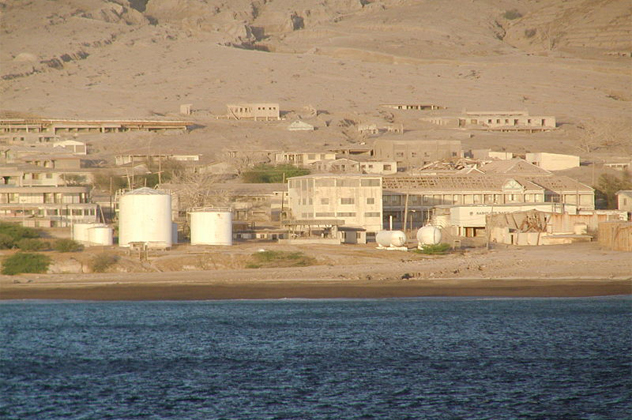
In 1989, the quiet Caribbean island of Montserrat was struck by a devastating hurricane, which damaged more than 90 percent of the structures on the island and devastated the economy. Refusing to give in to despair, the proud Montserratian people came together to repair the damage and rebuild their country. Six years later, the island’s long dormant volcano suddenly became active again. It’s a cliché, but sometimes life really isn’t fair.
In July 1995, the capital, Plymouth, was evacuated as a precaution, but a small number of residents were allowed back a year later. Then, on June 25, 1997, a huge eruption buried the town in lava, mud, and ash. Over 15 years later, the town is still buried—the tops of houses, cars, and even red telephone boxes can be seen protruding from the ash, which has been compacted to the density of concrete. In some places the ash is thick enough that the rooves of multi-story buildings are now barely above ground level. Nineteen people died when the ash engulfed Plymouth, and much of the population of Montserrat fled the island, never to return.
3Sathorn Unique

In the early ’90s, as the Thai economy boomed, a forest of cranes shadowed the streets of Bangkok. Powerful developers threw their money behind soaring skyscrapers that were intended to symbolize the new, wealthy Thailand.
But as it turned out, the gleaming new buildings were built on distinctly shaky foundations (well, not literally). In 1997, the Asian financial crisis slammed into Thailand’s economy, simultaneously destroying the funding for large-scale building projects and the demand for them. Among the most high-profile casualties was the gargantuan Sathorn Unique tower. Built as a luxury apartment and office complex, the tower boasts a distinctive rounded design based around hundreds of gleaming white balconies.
When Thailand’s currency collapsed, construction was immediately halted, and as of 2013, the futuristic 49-story building lies derelict in the center of Bangkok. The structure is said to be extremely unstable, and gaping holes in the floors make visiting a potentially life-threatening endeavor. In a nice touch, many of its 649 vacant apartments have apparently become inexplicably filled with creepy mannequins.
2Don Lacson’s Mansion
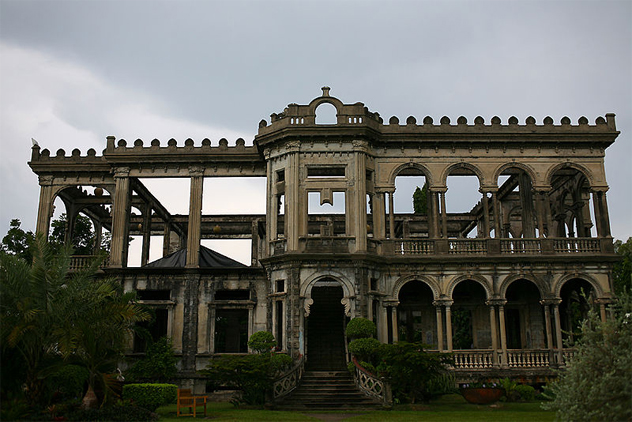
In the 1920s, Filipino sugar baron Don Mariano Ledesma Lacson was struck by tragedy when his Portuguese wife, Maria, died giving birth to their 11th child. Grief-stricken, Don Lacson decided that his planned new house would be a tribute to his wife’s memory. No expense was spared in constructing the magnificent, Italian-style mansion, which quickly gained a reputation as one of the most beautiful houses in the country. The house boasted a bedroom for each of his 10 children and a balcony where the family would gather to watch the sunset. The columns of the house were engraved with a sideways “M” for Maria.
Years later, World War II broke out and Japanese forces occupied the Philippines. Don Lacson, now happily remarried, received word that the invaders intended to occupy his house for use as their headquarters. Determined not to let this happen, the old man contacted the nascent resistance movement in the area and asked them to burn his house down. It’s said that it took three days to fully burn the house, and when the last of the flames sputtered out, the shell of the building still stood. It’s still standing today.
1Clipperton Island
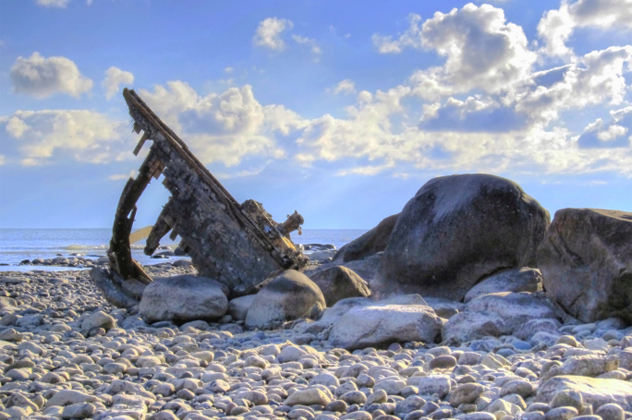
Clipperton Island is a tiny coral atoll in the eastern Pacific, just west of Mexico. For most of its history, the island has been uninhabited and unremarkable, but for a brief period in the early 20th century people did live there—with tragic results.
It was guano that changed everything. Years of compacted sea bird droppings had formed rich deposits of the substance on Clipperton, and by the late 19th century it was in high demand as an extraordinarily effective fertilizer. The previously ignored island was suddenly the subject of a bitter territorial dispute between France and Mexico. The Mexicans triumphed in the short term, placing a small military garrison there under the command of Captain Ramon Arnaud. A proud and ambitious man, Arnaud was initially reluctant to accept such a remote posting, but was reassured that the President of Mexico had personally chosen him to defend the nation’s territory. By 1910, Arnaud presided over a bustling community of over 100 workers and soldiers.
Then disaster struck. Revolution had broken out in Mexico, and the country was engulfed in fighting. In the chaos, the tiny settlement on Clipperton was completely forgotten. The regular supply ships that the settlement relied on for food and medicine simply stopped coming. Of course, this was all a mystery to the islanders until an American ship happened to sail by. The Americans explained the situation and offered to evacuate the settlement—no help, they explained, would be coming from Mexico. Arnaud, after much soul-searching, refused. He had been sent by the President himself to maintain Mexico’s borders and secure the priceless guano. The supplies would come. He would not abandon his post.
It was a terrible mistake.
By 1915, malnutrition and scurvy had claimed the lives of many islanders. Arnaud, desperate to atone for his mistake, set out with three of his men in a canoe in pursuit of a distantly glimpsed ship. They could not catch up with the other vessel, and all four were drowned when the canoe capsized as they rowed wearily back to the island. By 1917, only one man and 15 women and children were left alive. The final man, the island’s lighthouse keeper, proclaimed himself “King of Clipperton” and began a terrifying campaign of rape and murder against the surviving women.
The King’s brutal reign was only brought to an end when two women, one of them Arnaud’s widow, caught him by surprise, repeatedly stabbed him, and beat him to death with a hammer. Just hours later, a US Navy vessel finally stumbled onto the island and rescued the last survivors. The island and the remains of the settlement have remained abandoned to this day.
Alex is currently engaged in a dangerous game of cat-and-mouse deep beneath the Sahara. Follow him on Twitter.
